Modifying a car is not something that can be done overnight. It’s a continuous process that demands a lot of time, money, and diligence.
On top of that, there are many different ways to modify your car at vastly different price points. So it can get confusing to know exactly where to begin.
Because of the subjective nature of this topic, you’ll hear many people tell you that there’s no right or wrong way to modify a car. While there’s some truth to that, we have to disagree.
Unless you’re dead set on getting into something specific like drifting or time-attack and know exactly what you want, then the guidelines mentioned in this article won’t necessarily apply.
But if you’re new to the idea of modifying your car, then there is indeed a “right path” that you should follow. Having an index and guidelines will help you avoid rookie mistakes that can deter you from working on your car mod project.
In this guide, we’re going to set the record straight on how to modify a car by giving you all the information you’re going to need. We’ll also include a list of resources that you must check out before you begin your project.
Why Do People Bother With Car Mods?
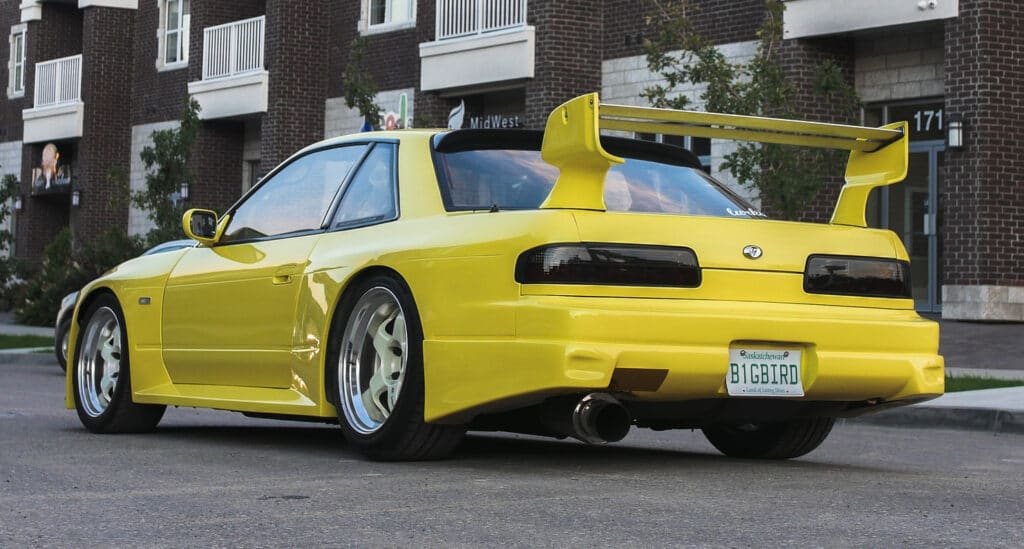
All cars have a ton of potential locked away due to emissions standards, marketability, and noise regulations. When all these factors are combined, it’s clear that stock cars have a lot of room for improvement.
That’s the main reason why people modify their cars — to unlock their true potential and to customize them according to their own unique style and requirements.
We’d argue that the concept of modifying cars falls somewhere between art and physics. It’s an opportunity to express yourself through the improvements you make to your machine. Typically these improvements are in the cosmetics, performance, and handling department.
But the truth is that not a lot of people modify their cars. The world of enthusiastic motorists is actually quite small if you look at it from the outside in.
Beginner Car Mods
Whether you want to excite your inner child or tend to a midlife crisis, your reason behind wanting to modify your car doesn’t matter. What matters is that you do it right.
Strategic change is the name of the game. Here are some points to keep in mind before you start off on this exciting journey.
Set Your Expectations

Before you begin, it’s important to be realistic about what you expect out of your car after modifying it. If you’re expecting a punchier mid-range and a V10 exhaust note just from installing a catback exhaust, you’re setting yourself up for disappointment.
To avoid disappointment, you need to know exactly which upgrades do what.
For instance, if you install a high-lift camshaft and a big wing on your street car, you’re going to end up with a weak midrange and blocked rear vision. But if you use the same car on a track, it’s going to be perfect.
If you only chase peak power and ignore the powerband that you actually use the most, you might end up making your car feel slower where it matters the most.
Remember, every modification comes with a compromise. If it adds power somewhere on the powerband, it’s likely going to take away power from another part of the powerband.
Similarly, spending thousands of dollars on exhaust and intake mods might make your car sound a lot cooler, but it won’t make it outrageously fast. That money can be better spent on forced induction.
It might be a more expensive route to take but at least your expectations will be met.
Start With the Right Car
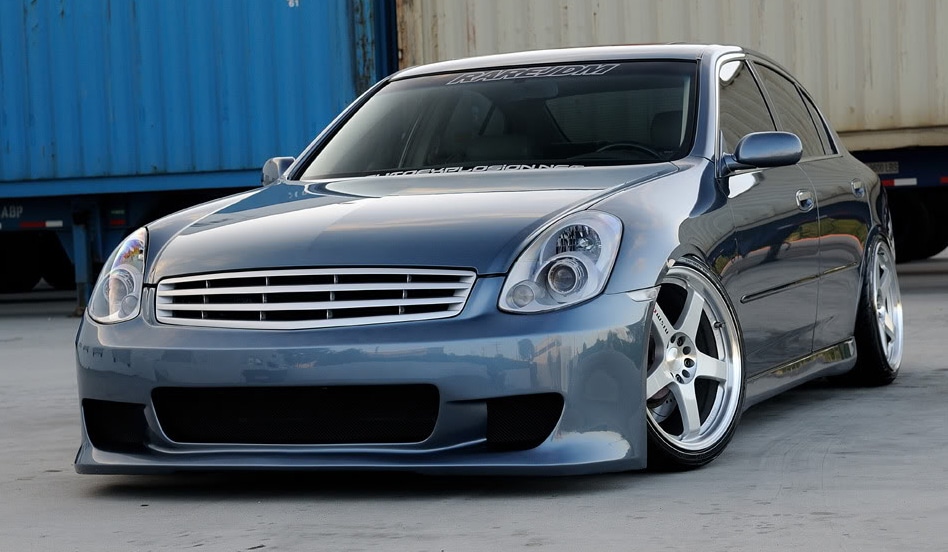
There are certain aspects of your car that cannot (and should not) be changed. For instance, the chassis, size, center of gravity, and weight distribution are all very integral to what the car feels like.
These are things you cannot change unless you’re a genius, or unless you have a really fat wallet. Or both.
For the amount of money you’re going to need to make a 350z handle like a Lotus Elise, you might as well just buy the Elise in the first place. If you want to get into drifting, don’t convert your FWD car into an RWD car — as barbaric as it sounds, it can be done. Make sure you buy a rear-wheel-drive car from the get-go.
You get the point. Always start with the right car!
Being able to make a car do the exact opposite of what it’s supposed to do is really ambitious, but not if you’re just starting out. You don’t want to be spending twice as much time wrenching as driving, do you?
Don’t Mod Your Car Immediately After Purchasing It
If you’ve recently purchased a used or new car, it’s recommended that you wait for at least a month before you modify it.
If it’s a new car, you need to wait for the engine break-in period and give yourself a chance to experience what the car is like without any upgrades installed.
But if it’s a used car, then you need to be even more careful. Used cars are often sold with inaccurate service histories and a plethora of unforeseen problems.
It’s good practice to give yourself some time with the car and see how it behaves over an extended period of time before you start modding it.
Maintenance First, Modifications Later
People who modify their cars the right way all have something in common — discipline and diligence. These guys do what they do because they love their cars, and not because they want to fit in or for attention.
If you love your car, chances are that you’re already on top of your maintenance regime. But if you’ve been neglecting your car despite your love for it, don’t worry. It’s never too late to start. It comes with experience and practice.
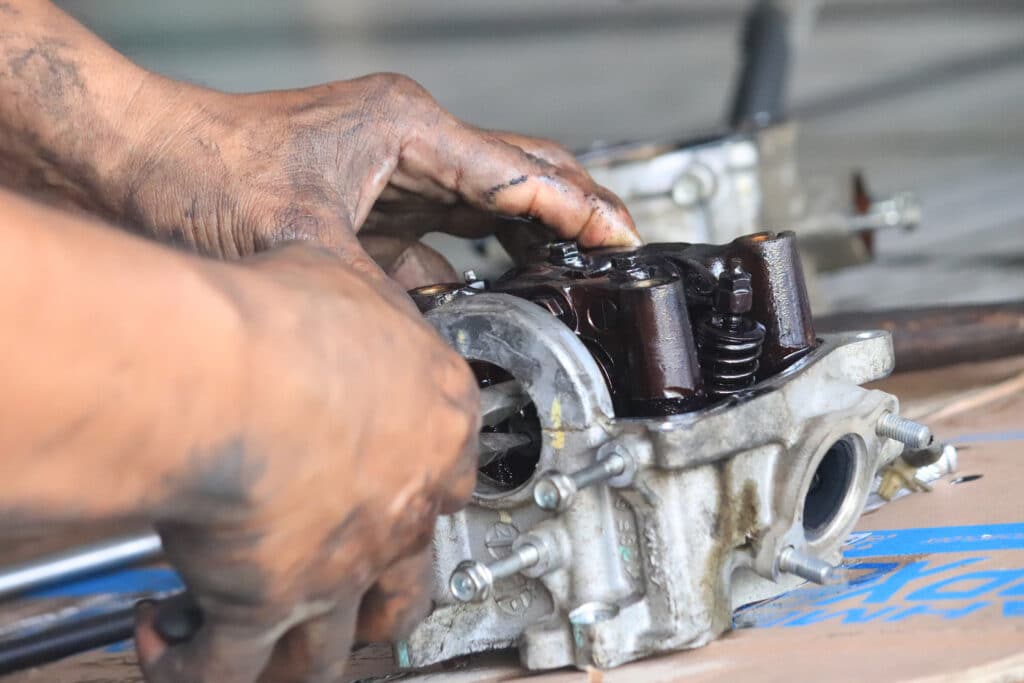
It’s easy to get carried away with the excitement (and the blurred judgment) that comes along when you first start off on the car mod journey.
Before you start actually upgrading things on your car, ask yourself this — is my stock car already in the best shape it could possibly be in? If the answer is no, then it makes more sense to first max out on the upkeep + maintenance bit. This includes:
- Using the best possible engine oil, transmission fluid, steering fluid, coolant, and any consumable you can think of.
- Investing in good tires and keep your tire pressure in check at all times.
- Upgrading your battery.
- Giving your engine a good once-over, using a leak-down or engine compression test kit.
- Checking your ignition system.
- Replacing old filters, hoses, and gaskets.
- Fixing any leaks — they’re a sign of neglect.
You get the gist. You want to make your car perform better than it was designed to.
And remember, neglecting underlying issues and starting off with modifications is only asking for trouble. It will end up costing you more in the long run when you inevitably break something.
Respect the Factory Design
Automakers spend millions in R&D, fine-tuning the end product every step of the way. Granted that emissions and noise regulations always hold cars back from their true potential, but that doesn’t mean that we should alter them to a point where they lose their original character.
For example, the Lotus Elise has a near-perfect weight distribution and handles like no other car out there. Why then would you want to modify the suspension angles and wheel alignment? If you know exactly what you’re doing, and if it’s required for competition use, then it’s a different story.
But if you buy a car that’s already perfect with the hopes of making it better with random modifications then you’re going to be disappointed.
Sure, there are some exceptions such as weight reduction mods, stickier tires, better rims, and lighter flywheels that can make your already nice car even nicer.
Avoid Making Changes You Can’t Undo
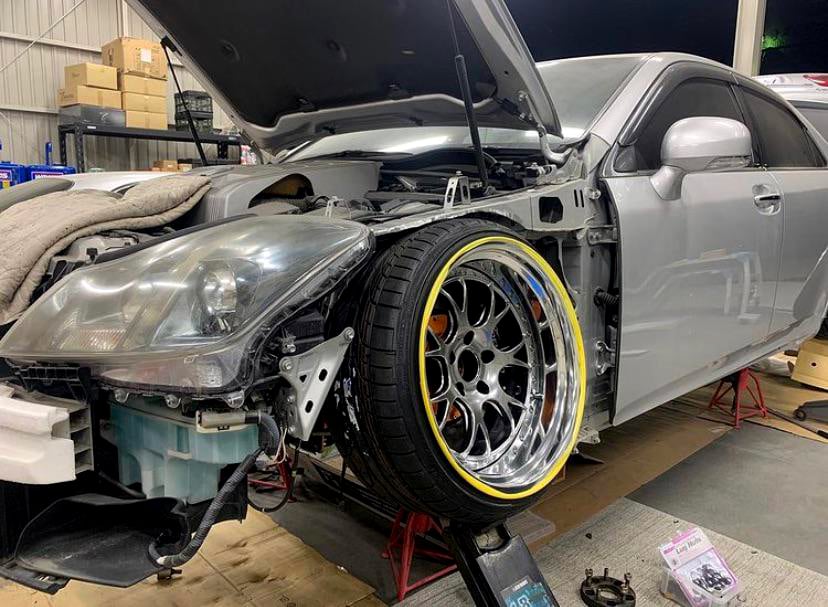
As a beginner, it’s best to avoid making changes that you cannot rollback. For example, engine swaps that require you to alter your subframe or use your home welder to install new mounting points, boring your engine –– basically any form of cutting, welding, or fabrication that permanently changes something in your car.
These mods are fine once you know exactly what you want out of your car. But if you’re in the experimental stage and are still navigating your way around the mod scene, keep it simple.
With that in mind, don’t engine swap your Miata as your first mod. Start with something simple like cold air intake, a simple exhaust system upgrade, sway bars, and coilovers.
Always Keep Your Stock Components
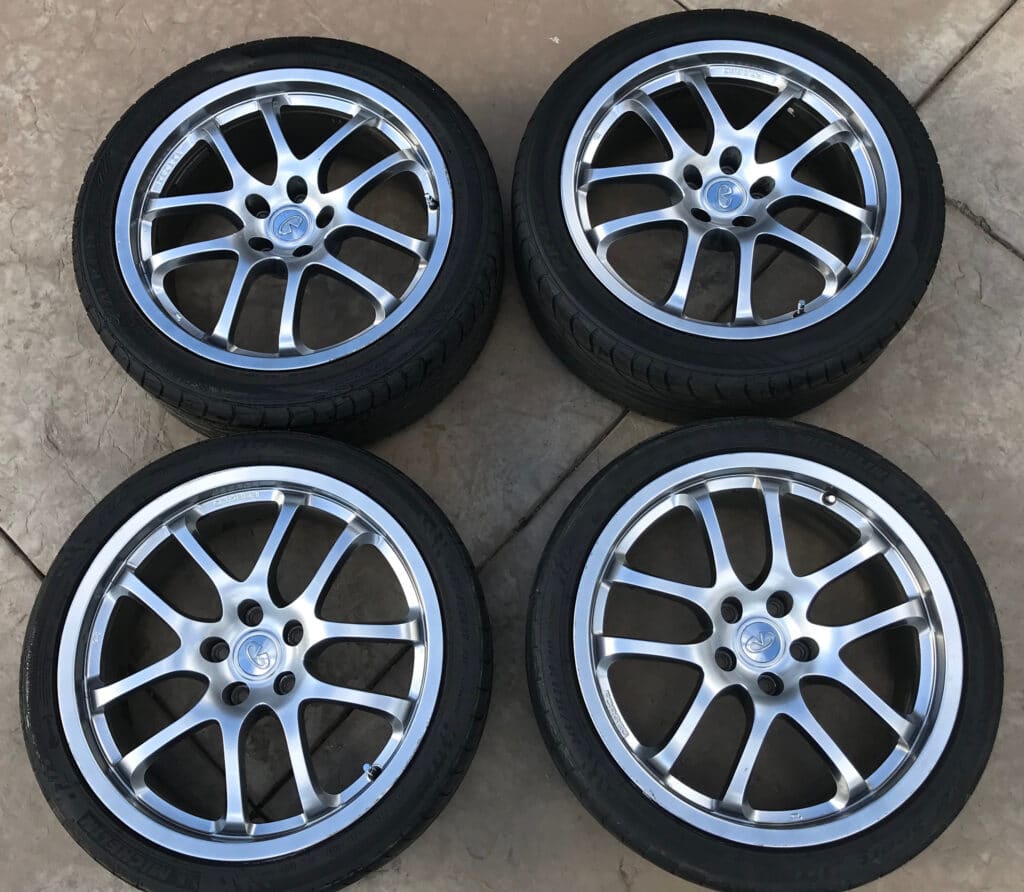
It’s a well-known fact that modifying a car won’t increase its value. Unless you’ve got extremely rare parts on it. For example, if you’ve got a pair of authentic Watanabe rims on your car, chances are you could bump up the price.
But honestly, you’d be better off selling the car in its stock form and selling the components separately. For this reason, it’s important to keep your OEM parts.
Plan Your Upgrades

Cross-compatibility is always a concern when buying several aftermarket parts. The challenge with purchasing aftermarket upgrades blindly is that you might end up wasting your money on parts that you’ll uninstall or replace soon after buying them.
This is a classic case of poor planning — when you mod your car for the sake of it, not knowing what you want out of the upgrade.
Planning your upgrades will unlock the following advantages:
- You can budget for your entire build more effectively.
- Gives you insight into compatibility issues you might have in the near future.
- Helps you predict what your car will feel like once the build is complete.
- Will incentivize you to set a performance goal and see it to completion.
- Minimized guesswork.
This way you can prepare a mod list, and start accumulating the parts slowly, as and when your budget allows for it.
For example, if you’re sure you want to turbocharge your car sometime soon, don’t pull the trigger on an exhaust system just yet. Wait until you decide which turbo you’re going to buy, and select the exhaust system that’s compatible with the turbo manifold that’ll come along with the kit.
What to Upgrade and How
There’s a lot more to car mods than fuzzy dice, K&N air filters, and vinyl wrap, but we’ve all had to start somewhere. The best way to get started is to make a list of upgrades and categorize it: performance, handling, and cosmetics.
Performance upgrades enable your car to make more power, handling mods will help you manage that additional power, and cosmetic upgrades will make your car look the part.
You can take a DIY approach for most of these. All you’ll need is a mechanics tool kit, and some quality jack stands, or car ramps.
Performance
This is the first thing that most enthusiasts tend to upgrade. These are the upgrades that are going to make your car go faster, this is where the hot sauce is at.
Always remember that performance upgrades are all co-dependent. The end result will always be greater than the sum of its parts.
For instance, your aftermarket exhaust system will do its job much more effectively if you pair it with an intake, wider throttle bodies, a larger plenum spacer, and engine management. All these mods need to work in harmony and complement each other.
Here are some of the most common areas to upgrade if you want to get more power out of your car.
Intake
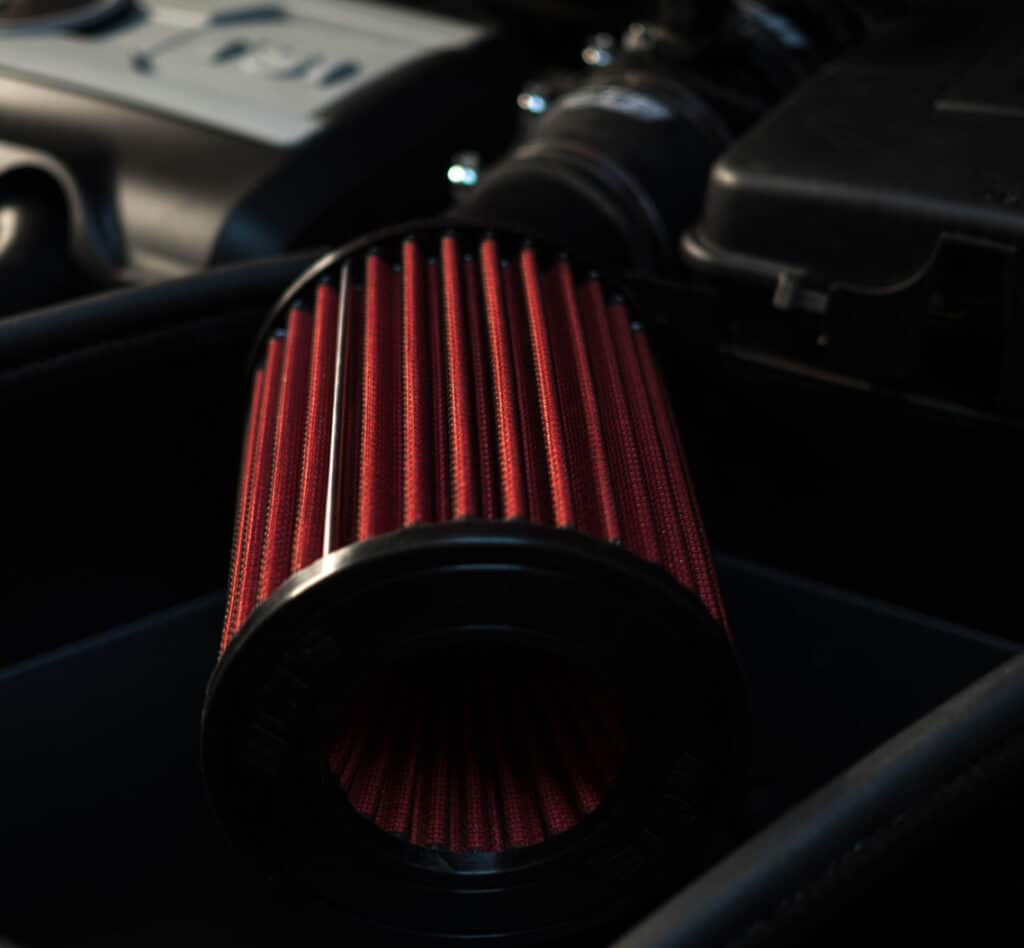
When combined, the intake and exhaust system are what help your engine breathe. Why do engines need to breathe? Because that’s how they make power.
For this to make sense, you need to know that fuel only burns when mixed with air. When your engine draws in air, it is mixed with a fine mist of fuel sprayed by the injectors.
The spark plug ignites this mixture and powers the four-stroke cycle. This will get easier to understand once you know the basics of how an internal combustion engine works.
The point is, by improving the quality and quantity of air entering the engine, you can push your engine to make more power. And this can be done with the help of intake system upgrades such as:
- Cold air intakes.
- High-flow air filter.
- Plenum spacers.
- Larger throttle bodies.
- Water-meth injection (if you’re taking the forced induction route).
Remember that simply installing a cheap air filter or cold air intake won’t really do anything, if not rob a couple of ponies. This is why some intake system upgrades are commonly scoffed at.
For these to work correctly, you need to combine them with:
- Engine management (where you tune the ECU to let it know that the engine is now getting more air, more on this later)
- Bigger fuel injectors
- Upgraded exhaust system.
Exhaust
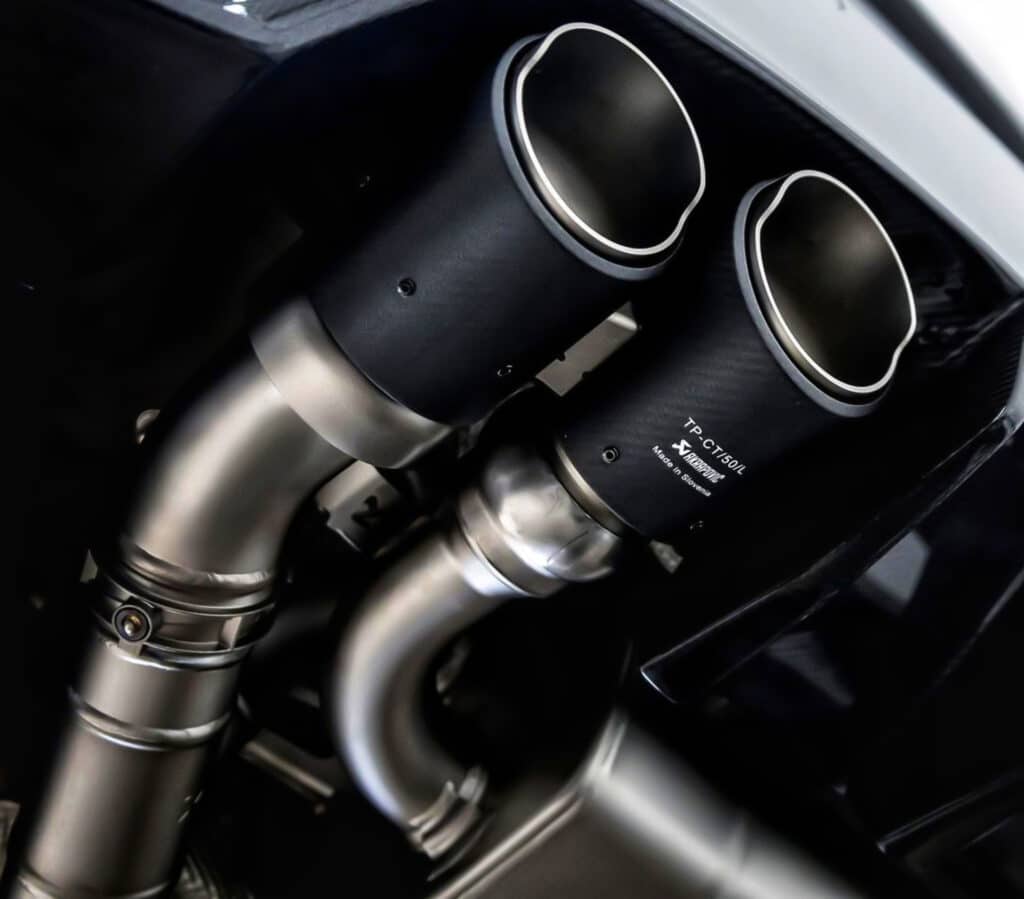
More air out means you can get more air in. That’s where exhaust systems come into the picture. Their sole purpose is to evacuate the combustion chamber and scavenge the waste gases out to make room for the next intake cycle.
Understanding how exhaust systems work will make it clear why it’s such a popular performance upgrade.
The idea behind having an upgraded exhaust system is to:
- allow for a larger intake charge,
- hotter combustion,
- and most importantly, getting the waste gases out as quickly and efficiently as possible.
Installing a catback or an axleback exhaust system is the easiest way to upgrade your exhaust system. But these alone won’t do much — for actual performance gains, combine the following:
- Aftermarket headers or exhaust manifold.
- Replacing the catalytic converter with a straight pipe or a high flow cat.
- Aftermarket Y-pipes (depends on engine layout).
Forced Induction

This is the holy grail of performance upgrades. It’s complicated, it’s invasive, and it most certainly isn’t cheap. It’s called forced induction because it involves forcing a lot more air into the engine.
But where does all that extra air come from? Intake and cooling systems rely on the airflow generated as a result of the car being in motion. So there’s a limited amount of air to work with unless you have a turbocharger or a supercharger installed.
What these do is they use the engine’s own mechanical force or exhaust stream to spin either an impeller or turbine which generates airflow as a result. This additional air is then rerouted into the engine through the intake system. Pretty clever!
This upgrade has the potential to increase your car’s power output by ~100 whp.
This is obviously an oversimplification, but don’t worry. You don’t need to know everything about every car mod right away. Take your time, do the research.
The only thing you need to know about forced induction is that it is not an easy route to take. In fact, we wouldn’t recommend beginners to go in for a supercharger or a turbocharger install.
Instead, if you haven’t purchased your project car yet, consider buying a car that comes turbocharged from the factory. The Mitsubishi Evo X and Subaru WRX come to mind.
But if you decide to install a turbocharger or a supercharger, we’d say hold off all other modification plans. Go through with the installation first, enjoy the car, and then decide if you want to install more upgrades.
Because installing either a turbo or a supercharger means all your other upgrade decisions will have to be made accordingly, given how inter-connected everything is.
Cooling
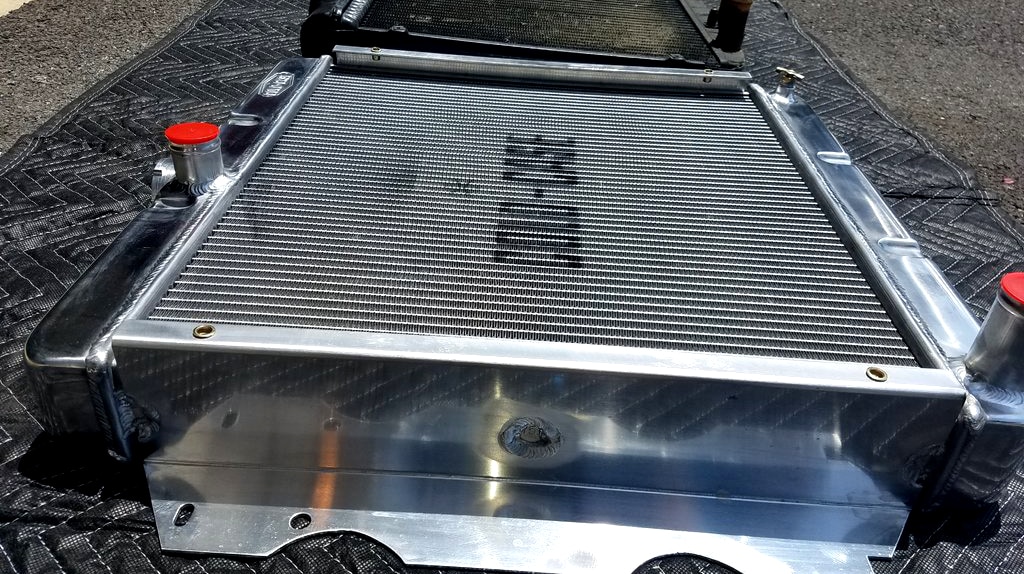
More power equals more heat, and more heat calls for a better cooling system. Your stock cooling system is designed to handle only normal levels of heat.
The moment you bring performance upgrades into the picture, your engine will run hotter. And remember, heat is the number 1 killer of performance, to combat that, you need a high-performance radiator and an upgraded oil cooler.
Combine the two and you’ll be doing your engine a massive favor.
Weight Reduction

What if we tell you that as a beginner, you can make your car go slightly faster and handle better, without spending anything?
It’s easy. Remove as much weight as possible from your car — if you can’t add power, you sure can make your car lighter so that it’s less work for the engine.
You’ll be amazed at how much of a difference this can make. Get rid of the carpeting, speakers, passenger seats (who needs those?), door panels, spare tire, and literally anything that you don’t need in your car.
This is a drastic measure because it isn’t practical, but hey, it’s free!
ECU Tuning
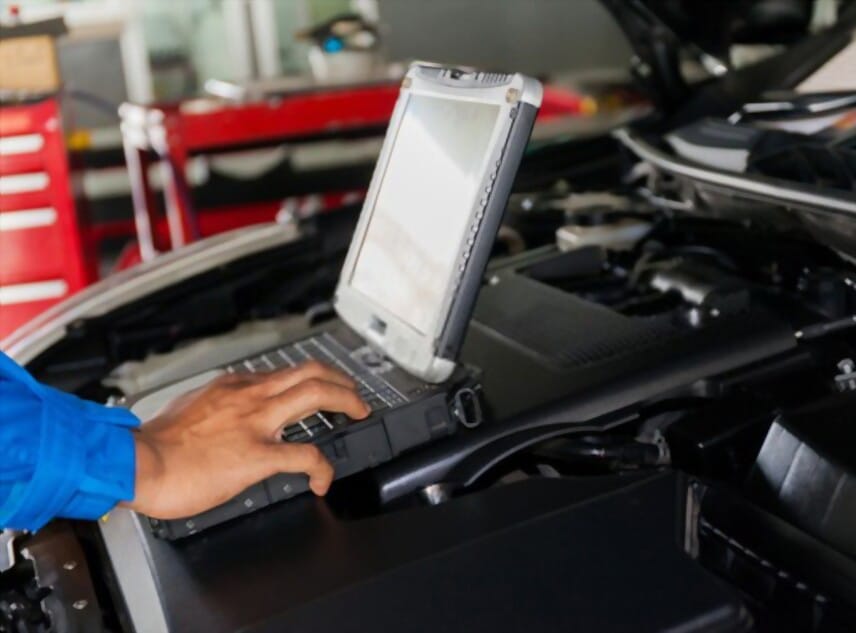
Your car has a brain of its own. It’s called the Electronic Control Unit or ECU.
The ECU is what calls the shots when it comes to deciding the air to fuel ratio. It takes into account multiple variables such as:
- Coolant temperature.
- Air temperature.
- Fuel temperature.
- Fuel Quality.
- Air pressure.
- Engine compression ratio, and much more.
It also controls spark timing and makes sure that the injectors and ignition system are activated at the right time by monitoring the position of the engine’s internal components with the help of a crankshaft position sensor.
Why is this important for mods? Because if you do anything that changes the amount of fuel/air going into the engine, the ECU needs to know about it so it can adapt all its functions accordingly.
By “letting the ECU know” we mean getting it tuned. Alternatively, you could also choose aftermarket engine management systems.
Without getting your ECU tuned, all your upgrades will be rendered mostly useless. Always get a tune after installing any modification that impacts performance, especially air and fuel related.
Handling

Safety always comes first, and that’s why we always recommend starting off with upgrades that make your car corner better, brake harder, and hold more traction in any situation.
If your car already makes a good amount of power from the factory, then it’s a no-brainer — you can make do with handling mods only.
Here is what you can upgrade to improve the handling of your car.
Suspension
One thing more important than making more power is being able to put that power to the ground. If you can’t use your car’s power to its full potential then what’s the point?
To do this you need to minimize the amount of weight transfer that your car experiences in all driving conditions, especially when cornering. We recommend reading our guide to suspension geometry in order to understand why this is important.
With reduced weight transfer comes predictability, safety, and much better traction. This in turn allows you to push your car harder and keeps you safe when you’re at the limit.
The suspension system includes a lot more than just the shock absorbers though. It includes all the components that make up the unsprung parts of a car:
- Control arms or strut assembly (depending on suspension type),
- Axle,
- Rack and pinion assemblies,
- Tie rods,
- Steering knuckle,
- Bushings,
- Sway bars, and more.
Some of these cannot be upgraded but the most commonly upgraded suspension components are the shock absorbers, control arms, and sway bars.
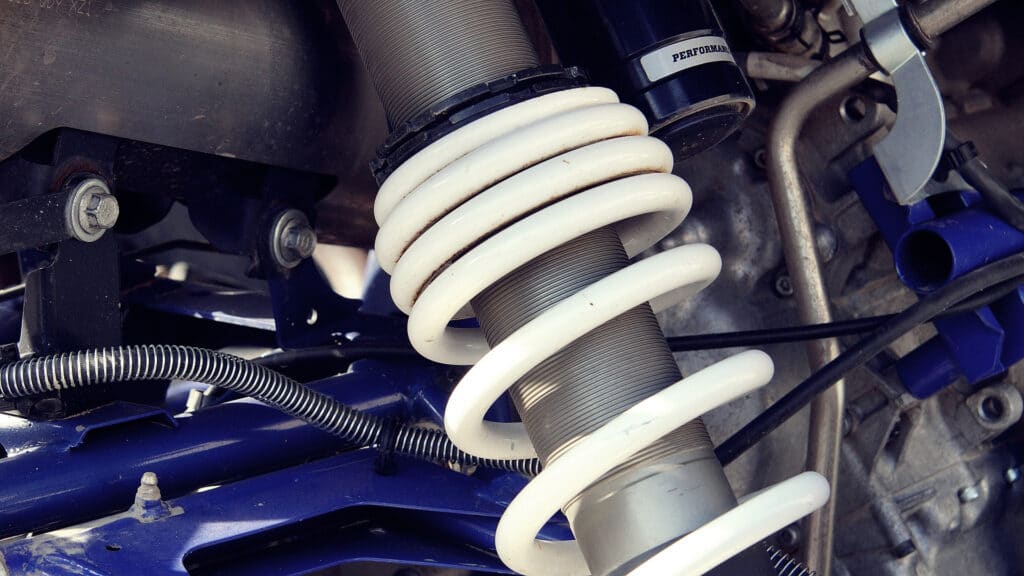
Coilovers and lowering springs are extremely popular upgrades that are easily accessible and easy to install. If you simply want to lower your ride height and reduce weight transfer, lowering springs are your best option.
But if you want to be able to adjust your preload, damping, and ride height, then we suggest installing coilovers.
If you’ve read our suspension geometry article, you’ll know that changing your ride height also results in unwanted changes in your suspension angles.
These changes need to be corrected and you can do this with the help of adjustable control arms and camber kits.
Air suspension is also an option. Bags vs coilovers is a hot debate, and if you’re going to pick one over the other, be sure to know about both their pros and cons.
Installing stiffer sway bars is one of the best cheap car modifications and an easy way to reduce weight transfer. This will instantly transform the handling of your car.
Wheels

The best way to increase your car’s curb appeal and lower drivetrain losses is to install a lighter set of wheels.
Remember how we said weight reduction makes a massive difference? It makes an even bigger difference if weight is removed from moving parts. This is because of something called rotational inertia.
By installing lighter wheels, your car will accelerate quicker, brake sooner, and handle better. Not to mention the improved aesthetics. Just be sure to measure your rim size and choose the right wheels — this is very easy to screw up.
Be sure to choose the right wheel offset. Alternatively, you could install wheel spacers to get rid of any clearance or fender rubbing issues.
Tires

If you had to pick one and only one upgrade from this entire list, we’d say choose the best tires your money can buy. There’s nothing more pointless than spending thousands modifying your car and running shitty tires
Lighter tires + lighter rims + better traction = do the math.
Don’t forget to check the manufacturing date when you buy tires. As tires get older, the rubber hardens up and loses its effectiveness. You’ll come across many great deals on tires, these are typically offered when it’s old stock.
Brakes

Most cars have adequately powerful brakes from the factory. But if you’ve installed a turbo kit or done anything to make your car faster than what the manufacturer intended, get better brakes.
If you don’t end up changing the caliper, master cylinder, or rotors, at least consider using a different type of brake pad. You also have the option of installing a big brake kit.
Cosmetics and Ergonomics
Once you have your handling sorted, a few performance upgrades installed, now it’s time to make your car look the part. Unless you’re into building a modified sleeper car.

What looks good and what doesn’t is really up to you. Our recommendation would be to keep it simple and tasteful — a clean body with maybe one decal on the rear windscreen as opposed to busy graphics straight out of car racing movies like Need for Speed or Fast and the Furious.
We love it when form meets function; hood scoops that actually work, for example.

Try and avoid gimmicky parts that mimic the real deal. These include:
- Fake vents.
- Oversized exhaust tips.
- Aero parts that don’t work.
- Carbon fiber vinyl wrapped-anything.
Instead, go for functional upgrades like:
- Aftermarket seats.
- Aftermarket steering wheel.
- Rear wing (only if you’re going to track your car).
- Front splitter and rear diffuser.
- Short throw shifter.
- Aftermarket gauges.
Best Cars To Modify

Each and every car in the world can be modified. But there are some that are heavily over-engineered from the factory, take nicely to aftermarket upgrades, and have a massive community of motoring enthusiasts backing up the platform.
It’s mostly JDM, tuner cars, or drift cars that fit the bill. But if import cars aren’t your thing then you can always look into muscle cars and have some naturally aspirated V8 fun.
Web Resources for Modified Car Enthusiasts
Car enthusiasts love to share information about modded cars. Whether it is on modified car websites like ours or automotive forums, or in person at track days and car meets, it’s not a “guarded” community. We all want to see other people build cool cars.
So if you want to speak with other people who love modifying the same type of car as you do, these resources might be interesting.
Automotive YouTube Channels
If you’d rather not spend hours reading but still want quality automotive information and industry news, YouTube is the best place to be.
There’s a plethora of high-quality content on there which gives you insight into the automotive aftermarket and enthusiast scene.
Some of our top recommendations include:
- Fitment Industries
- Donut Media
- That Dude In Blue
- Engineering Explained
- Kyle Engineers
- Gears & Gasoline
Forums
Forums provide an essential platform where car owners can discuss relevant issues such as insurance for their modified car, engine swaps, and other workshop projects.
In the best car forums, you’ll find enthusiasts discussing where to get parts, how to deal with legal issues, and showcase their modifications.
The website served its users for 16 years, from 2000 – 2016 sharing information on all sorts of cars like upgraded Mazda Miatas, and modified Nissan 350z’s, or tuned Infiniti G37‘s.
Events

Here are some of the shows you may want to look out for:
- Wörthersee Treffen: Takes place in Wörthersee, Austria, usually in late May. The event is mostly for people interested in Volkswagens.
- SEMA Show: Typically takes place in Las Vegas Nevada in early November. According to the organizers of this show, it is “the premier automotive specialty products trade event in the world.” They add that “it draws the industry’s brightest minds and hottest products to one place, the Las Vegas Convention Center. Also, the SEMA Show provides attendees with educational seminars, product demonstrations, special events, networking opportunities, and more.”
- The Essen Motor Show: Usually starts late in November and ends in early December at the Essen Convention Center in Essen, Germany. The organizers promise that the show will feature over 160 vehicles from across Europe.
Automotive Modification Schools
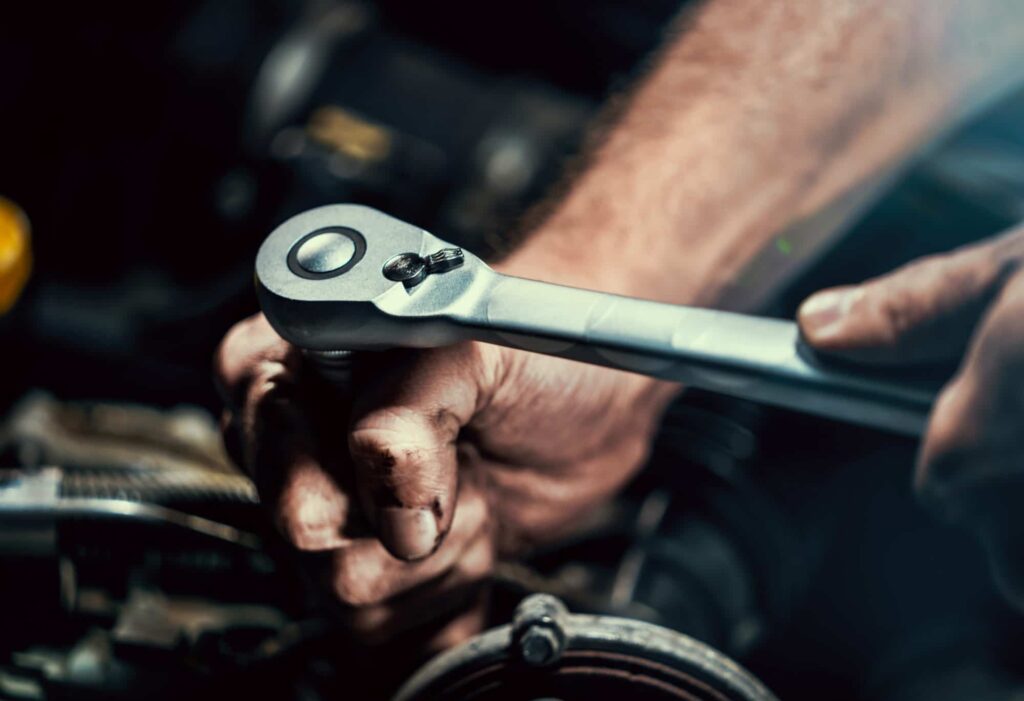
Alternatively, enthusiasts keen on learning how to modify a car along with the ins and outs of car restorations can go to institutions such as McPherson College. They host programs like The Automotive Restoration Technology Program.
Others include the Auto Mechanic School, which provides students with skills to express their creativity by learning how to undertake restorations and modifications.
More information about automotive modifications and restoration schools can be found here.
How to Modify Your Car — Final Thoughts
So that was our primer on how to modify a car without driving yourself crazy. This hobby is a money pit and that’s why you should be cautious with the decisions you make.
Remember to get in touch with other car enthusiasts, attend your local cars and coffee, and get as much feedback as you can. And most importantly, have fun while you’re at it.
Why do you want to modify your car? Let us know in the comments below!


